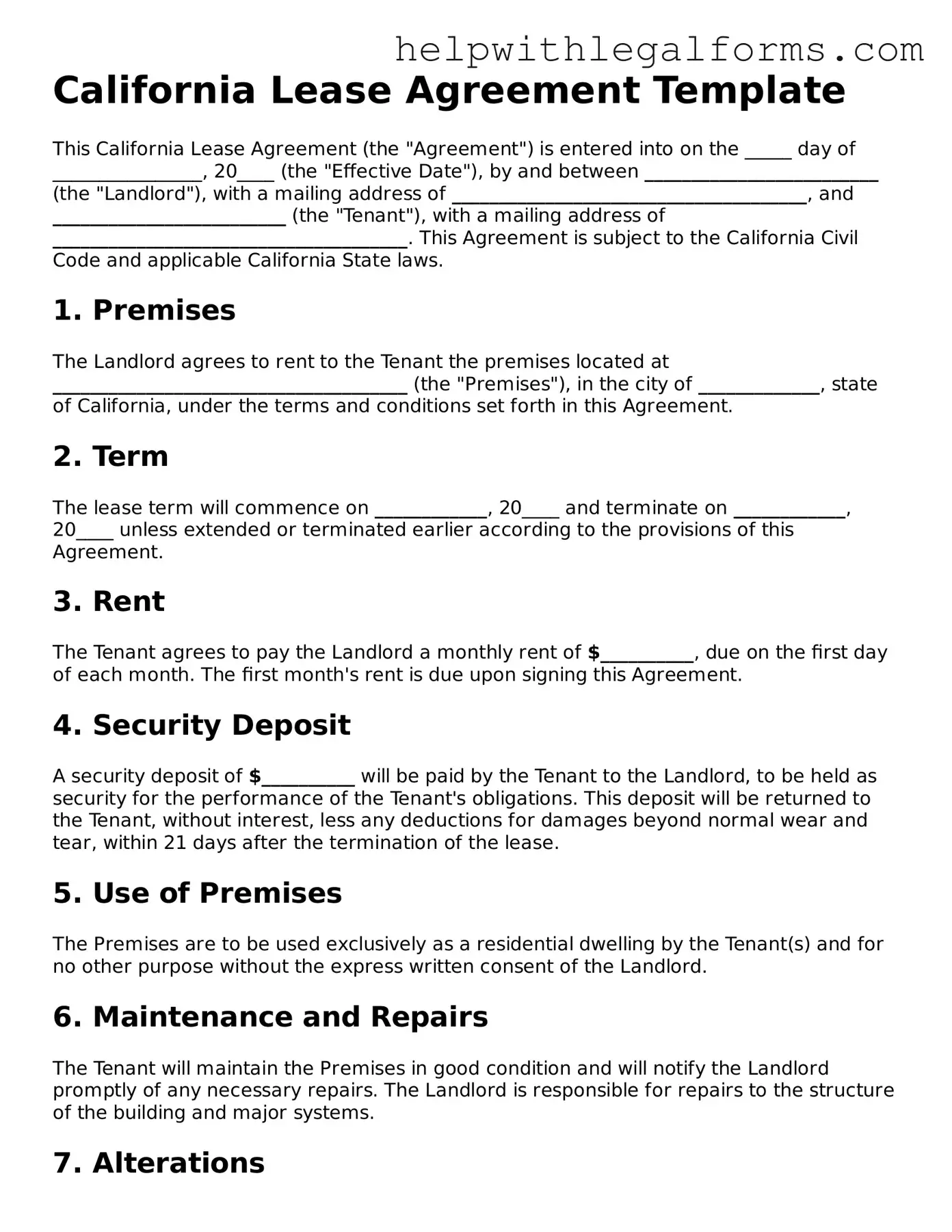California Lease Agreement Template
This California Lease Agreement (the "Agreement") is entered into on the _____ day of ________________, 20____ (the "Effective Date"), by and between _________________________ (the "Landlord"), with a mailing address of ______________________________________, and _________________________ (the "Tenant"), with a mailing address of ______________________________________. This Agreement is subject to the California Civil Code and applicable California State laws.
1. Premises
The Landlord agrees to rent to the Tenant the premises located at ______________________________________ (the "Premises"), in the city of _____________, state of California, under the terms and conditions set forth in this Agreement.
2. Term
The lease term will commence on ____________, 20____ and terminate on ____________, 20____ unless extended or terminated earlier according to the provisions of this Agreement.
3. Rent
The Tenant agrees to pay the Landlord a monthly rent of $__________, due on the first day of each month. The first month's rent is due upon signing this Agreement.
4. Security Deposit
A security deposit of $__________ will be paid by the Tenant to the Landlord, to be held as security for the performance of the Tenant's obligations. This deposit will be returned to the Tenant, without interest, less any deductions for damages beyond normal wear and tear, within 21 days after the termination of the lease.
5. Use of Premises
The Premises are to be used exclusively as a residential dwelling by the Tenant(s) and for no other purpose without the express written consent of the Landlord.
6. Maintenance and Repairs
The Tenant will maintain the Premises in good condition and will notify the Landlord promptly of any necessary repairs. The Landlord is responsible for repairs to the structure of the building and major systems.
7. Alterations
Tenant shall not make any alterations, additions, or improvements to the Premises without the prior written consent of the Landlord.
8. Governing Law
This Agreement shall be governed by, and construed in accordance with, the laws of the State of California.
9. Entire Agreement
This document and any attached addenda constitute the entire agreement between the parties and supersede any previous negotiations, commitments, or writings. This Agreement may only be amended through a written document formally executed by all parties.
Signatures
By signing below, the parties agree to the terms and conditions of this California Lease Agreement.
Landlord's Signature: _____________________________ Date: ___________
Tenant's Signature: _____________________________ Date: ___________
